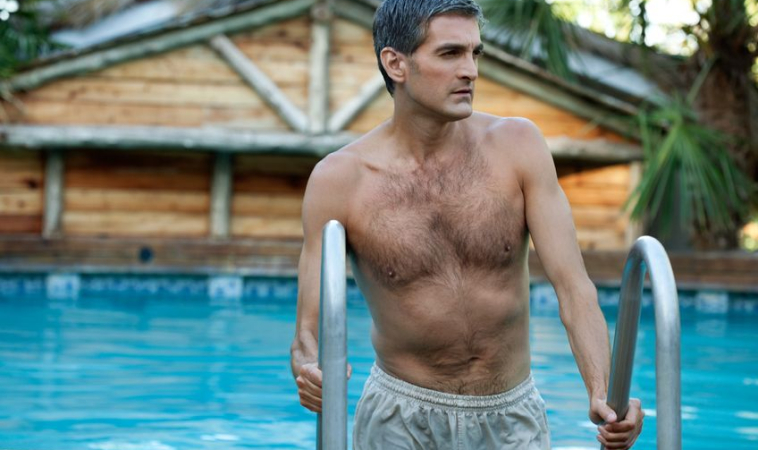Dr. Richard Maurer, ND
@DrRichardMaurer
The fitter you are, the less heart disease risk you have—that isa well-publicized truth. But this new study solidly expands upon prior research and confirms fitness as a marker of cancer risk.1
Researchers used data collected on nearly 14,000 men and, after measuring their level of “fitness” (in just a moment we’ll help you define what this means for you), tracked disease and death outcomes for over thirty years while controlling for many of the confounding factors such as smoking. The end result—those that were fitter, in this case cardiorespiratory fitness (CRF), had substantially less colon cancer and lung cancer. Remarkably, participants didn’t need to be crazy-fit—they just needed to be fitter than the baseline.
By the way, don’t wait to get started here—we’re talking about fitness level in “middle age” and cancer risk decades later. Here’s what this researchers discovered about the three cancers they studied:
- Colon cancer is the third most diagnosed cancer in men with a lifetime risk of about one in twenty. Compared with low cardiovascular fitness—those men in the moderate fitness category had 37% fewer incidences and those in the high fitness category had 44% fewer.
- Lung cancer, the second most diagnosed cancer in men, statistics were more dramatic. Compared to baseline, the fitter individuals had 43% and 55% reduction for moderate and high fitness categories respectively.
- Fitness level in middle age did not signify protection from prostate cancer in later years.
- Yet the researchers found more—The higher the fitness level of the men in middle age, the more likely they were to survive if they did get any of the three cancers measured.
 Less cancer—and less deadly cancer, the sales pitch for improved fitness just got more convincing. Let’s figure out how to measure your progress toward better fitness.
Less cancer—and less deadly cancer, the sales pitch for improved fitness just got more convincing. Let’s figure out how to measure your progress toward better fitness.
The measurement used in this new study was METs—a unit of your metabolism during rest and activity. At complete rest, your MET expenditure is one. Various household activities utilize two to four METs, while insanely demanding sports like ice hockey are closer to thirteen METs. In this study, men who could exercise on a treadmill at a higher MET level were deemed fitter—it’s as simple as that. The good news? Raising your fitness level by as little as one MET had a measurable effect on future cancer risk. So, shoot for doing a little more when you work-out. It’s as simple as that. Here is a list of activities that prove your improved fitness in METs.2
Running: An 8½ minute mile (5min 15s/km) burns one MET more than a 9 minute mile (5min 35 s/km). The same goes for reducing a 10-minute mile to 9 ½ minutes.
Cycling: For each increase of 3-miles (5 km) per hour, you are 1 MET unit higher in your fitness.
The faster you walk or swim, the greater the MET demand, marking that you have reached a higher level of fitness.
Carrying your golf clubs versus riding a cart hits twice the METs, from 2.5 to 5.
So rather than doing what you have always done to stay fit, improve your fitness a little bit. Your reward is not merely speed and endurance—less cancer, less death, less heart disease—oh yeah, and you feel awesome. Do we have a study for that?
 Dr. Richard Maurer is a licensed naturopathic physician who, after practicing in a primary care setting for twenty years, provides a fresh and radical perspective on metabolic health and recovery from disease. Rather than provide yet another medical opinion, Dr. Maurer puts you in the driver’s seat of your health and wellness, helping you decode your blood test results to find the diet and fitness habits that reverse and prevent metabolic conditions, such as prediabetes and type 2 diabetes, weight gain and hypothyroid problems.
Dr. Richard Maurer is a licensed naturopathic physician who, after practicing in a primary care setting for twenty years, provides a fresh and radical perspective on metabolic health and recovery from disease. Rather than provide yet another medical opinion, Dr. Maurer puts you in the driver’s seat of your health and wellness, helping you decode your blood test results to find the diet and fitness habits that reverse and prevent metabolic conditions, such as prediabetes and type 2 diabetes, weight gain and hypothyroid problems.
His recent book, The Blood Code: Unlock the secrets of your metabolism [2014], provides the tools for you to understand and act on key blood tests and skin fold measurements to define your personalized diet, fitness and nutritional needs. Dr. Maurer’s individualized metabolic approach is for teenagers to any age adult—with a goal toward recovering health and vitality, disease reversal is the beginning.
His personal and familial trend toward type 2 diabetes motivates him to empower people to recover their metabolic “sweet spot” through proven self-guided diet, nutritional, and fitness habits.
Dr. Maurer is the past president of the Maine Association of Naturopathic Doctors and most recently presented for the Weston Price Foundation, American Association of Naturopathic Physicians and the popular PaleoF(x) Conference. He lives in Maine with his wife Alexandra where they have raised three children.
References:
- Lakoski S.G., et al. Midlife Cardiorespiratory Fitness, Incident Cancer, and Survival After Cancer in Men: The Cooper Center Longitudinal Study. JAMA Oncol. Published online March 26, 2015. doi:10.1001/jamaoncol.2015.0226.
- Jette M., et al. Metabolic Equivalents (METS) in Exercise Testing, Exercise Prescription, and Evaluation of Functional Capacity. Clin. Cardiol. 13, 555-565 (1990).

















